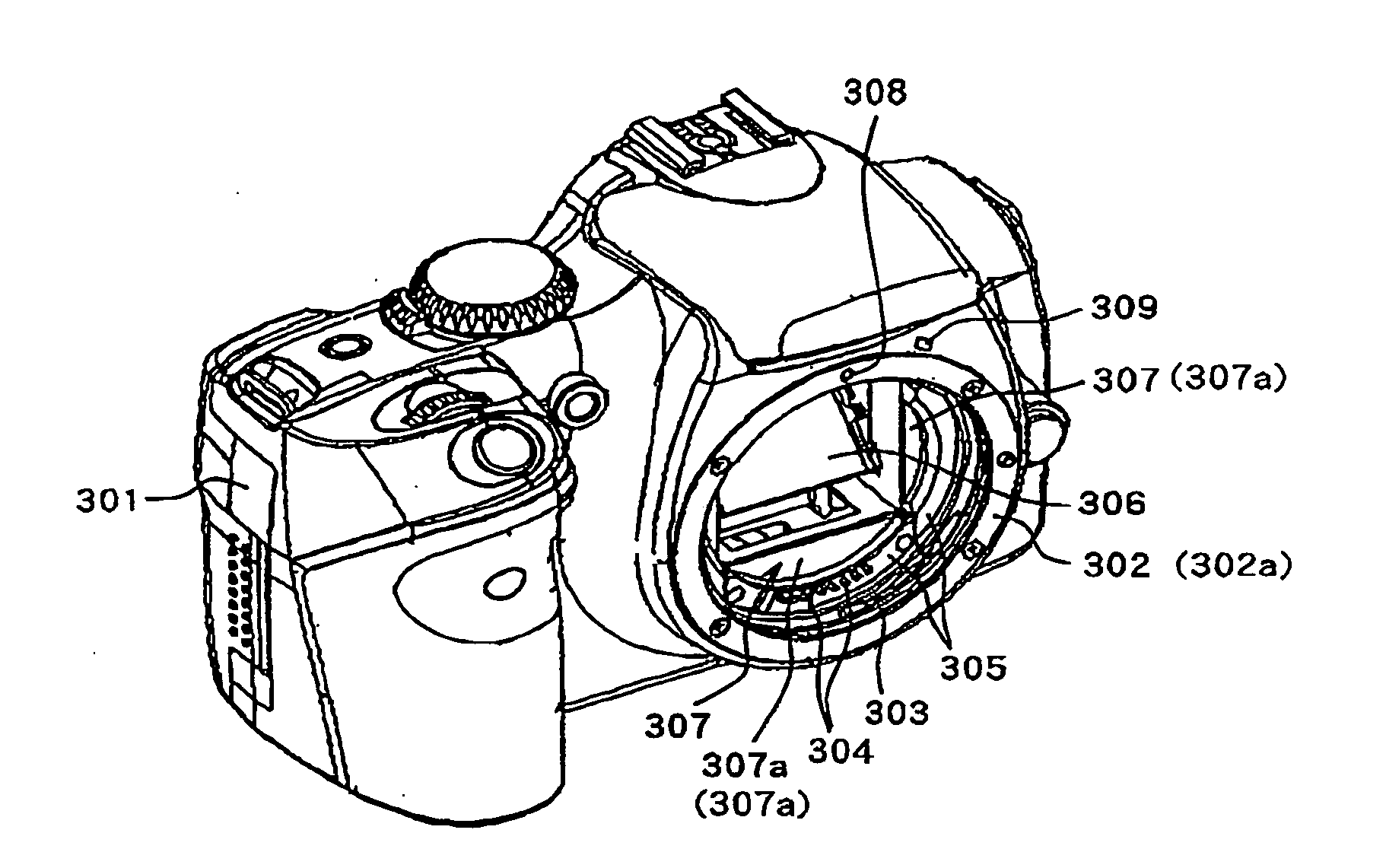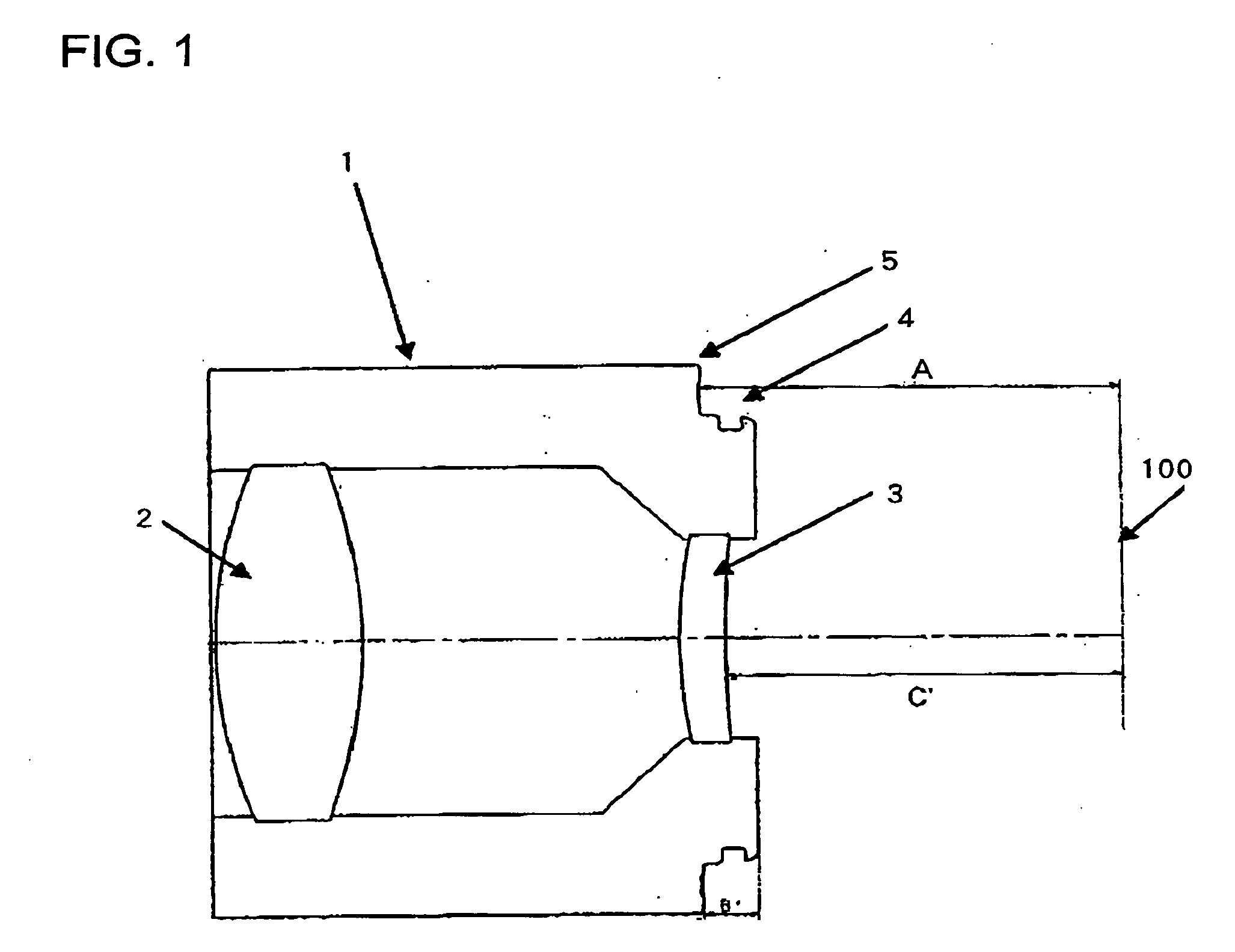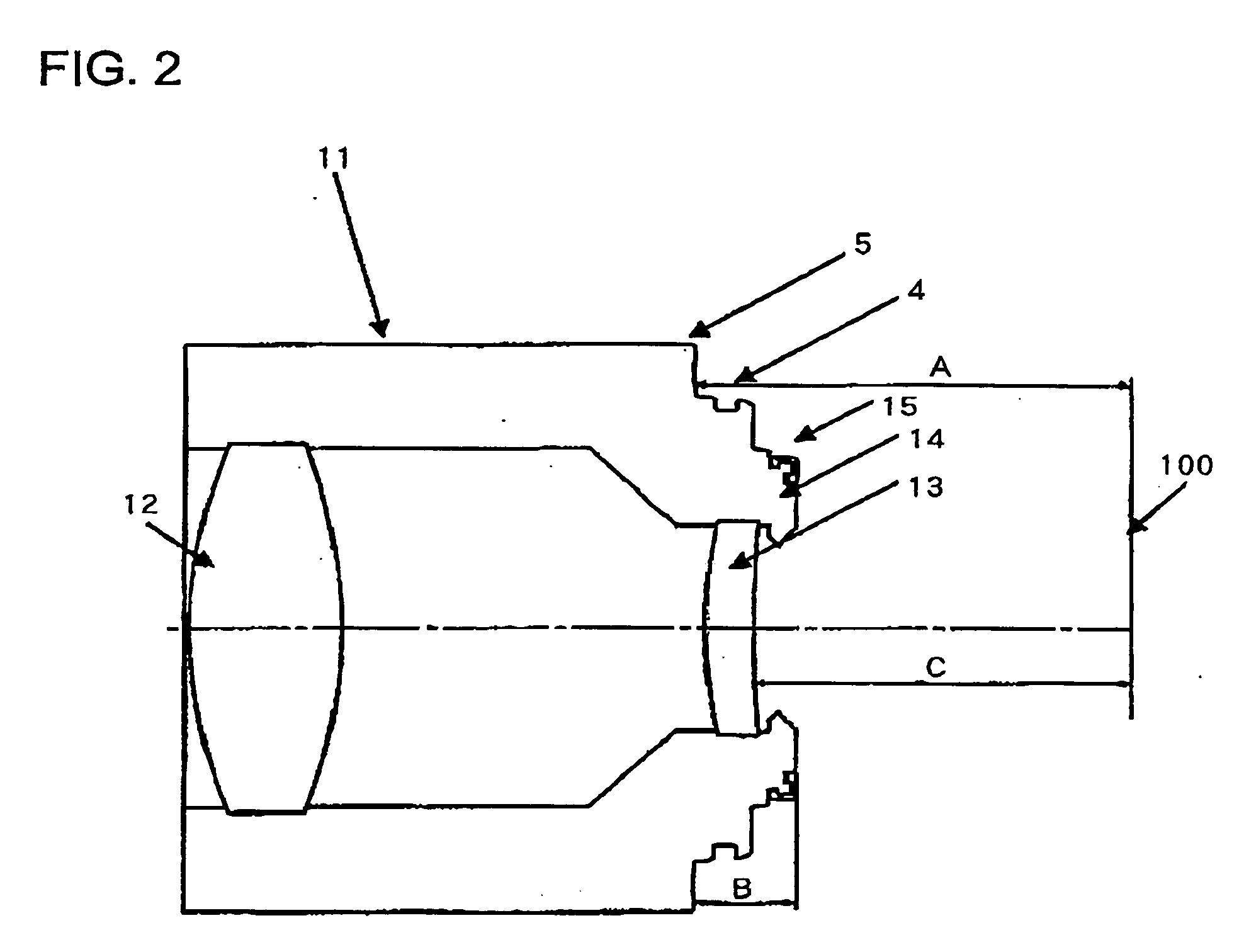Interchangeable lens, interchangeable lens system and camera system
a technology of interchangeable lenses and interchangeable lenses, which is applied in the direction of mountings, instruments, camera body details, etc., can solve the problems of ccd sensor or cmos sensor having the same size as the 35 mm silver-haloid film, unable to reach luminous flux, back end of interchangeable lens may interfere with the quick return mirror,
- Summary
- Abstract
- Description
- Claims
- Application Information
AI Technical Summary
Benefits of technology
Problems solved by technology
Method used
Image
Examples
embodiment 1
[0085] [Embodiment 1]
[0086]FIG. 1 to FIG. 6 show a camera system including an interchangeable lens and camera body which is Embodiment 1 of the present invention.
[0087]FIG. 1 is a cross-sectional view showing a first interchangeable lens 1 for a 35 mm film camera, which holds a first optical lens 2 and a second optical lens 3 in a lens barrel. On the back end side, bayonet lugs 4 for bayonet coupling with a camera body are provided and the bayonet lugs 4 are disposed closer to an image-pickup surface 100 than a mount reference surface 5 located at a distance of a flange back “A” from the image-pickup surface 100. Here, the portion protruding from the mount reference surface 5 including the bayonet lug 4 toward the image-pickup surface corresponds to the protruding portion of the first interchangeable lens 1.
[0088] Furthermore, the distance from the mount reference surface 5 to the end face of the bayonet lug 4 on the image-pickup surface 100 side is represented by “B′”. Furthermor...
embodiment 2
[0108] [Embodiment 2]
[0109] Using FIG. 11 to FIG. 18, a camera system which is Embodiment 2 of the present invention will be explained. FIG. 11 to FIG. 14 are cross-sectional views showing main parts of the camera system. FIG. 15 and FIG. 16 are cross-sectional views and front views showing first and second interchangeable lenses of this embodiment. FIG. 17 and FIG. 18 are cross-sectional views and front views showing the first and second camera bodies of this embodiment.
[0110] Reference numerals 120 and 130 denote interchangeable lenses, 120 denotes a second interchangeable lens having a small image size on the film surface (or photoreceiving surface of an image-pickup element) and 130 denotes a first interchangeable lens having a large image size. Reference numerals 140 and 150 denote camera bodies, 140 denotes a second camera body which allows mounting of the first and second interchangeable lenses 130, 120 and 150 denotes a first camera body which does not allow mounting of the...
embodiment 3
[0131] [Embodiment 3]
[0132] With new reference numerals assigned to the structure of the interchangeable lenses and cameras explained in Embodiment 1 and Embodiment 2, Embodiment 3 will be explained using FIG. 19 to FIG. 41 in detail below. Here, a case where the first and second cameras are digital cameras provided with an image-pickup element will be explained. In the following explanations, “front” means an object side and “back” will refer to an image plane or image-pickup element side.
[0133]FIG. 19, FIG. 26, FIG. 28 and FIG. 29 show a first camera (camera body) 201. The first camera 201 is provided with a ring-shaped mount 202 for mounting a first interchangeable lens, which will be described later, on the front. The front end face of this mount 202 constitutes a reference surface (mount reference surface) 202a when a first interchangeable lens is mounted.
[0134] Inside the mount 202 (inner diameter side), bayonet lugs 203 for bayonet coupling with the first interchangeable le...
PUM
 Login to View More
Login to View More Abstract
Description
Claims
Application Information
 Login to View More
Login to View More - R&D
- Intellectual Property
- Life Sciences
- Materials
- Tech Scout
- Unparalleled Data Quality
- Higher Quality Content
- 60% Fewer Hallucinations
Browse by: Latest US Patents, China's latest patents, Technical Efficacy Thesaurus, Application Domain, Technology Topic, Popular Technical Reports.
© 2025 PatSnap. All rights reserved.Legal|Privacy policy|Modern Slavery Act Transparency Statement|Sitemap|About US| Contact US: help@patsnap.com



